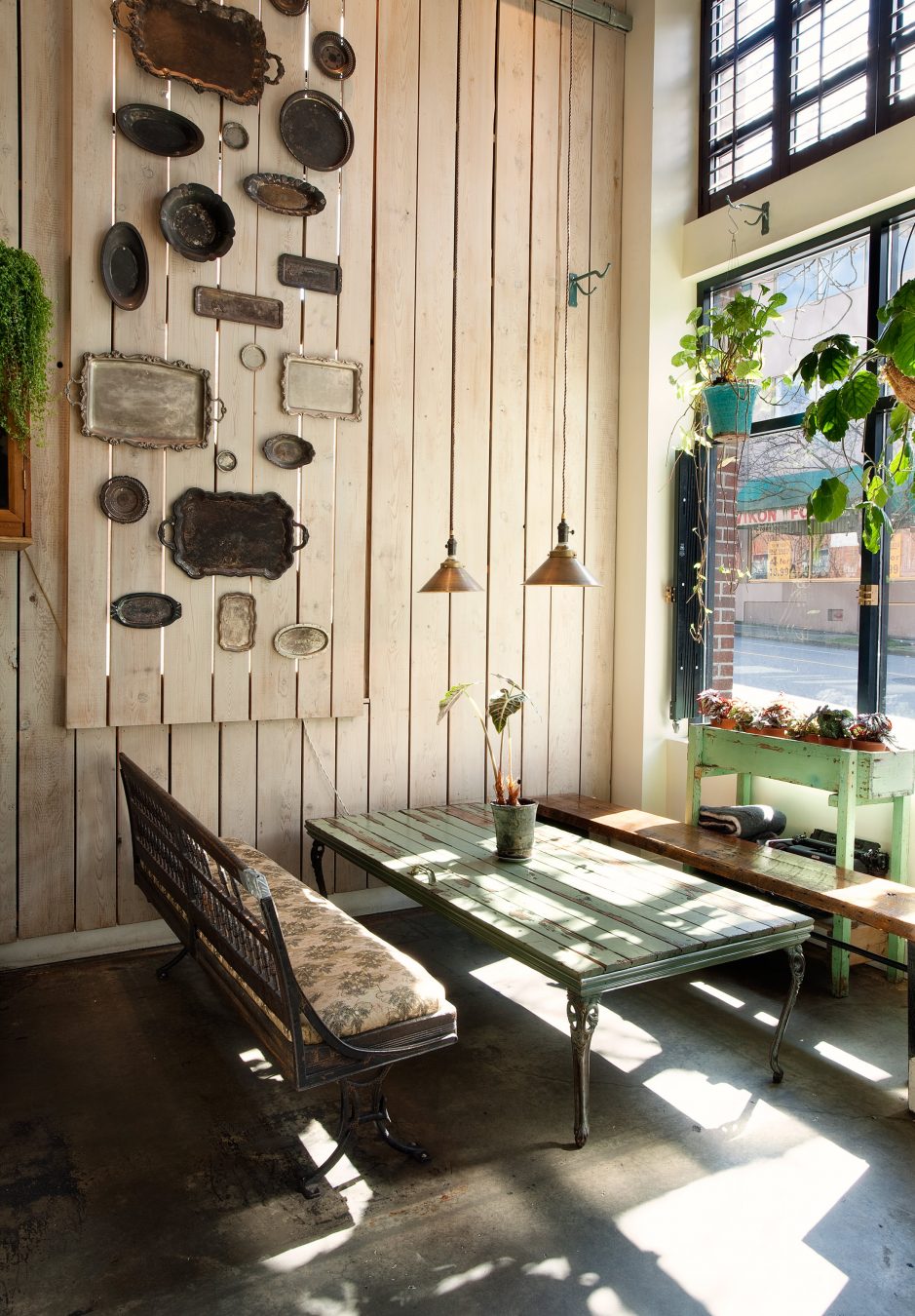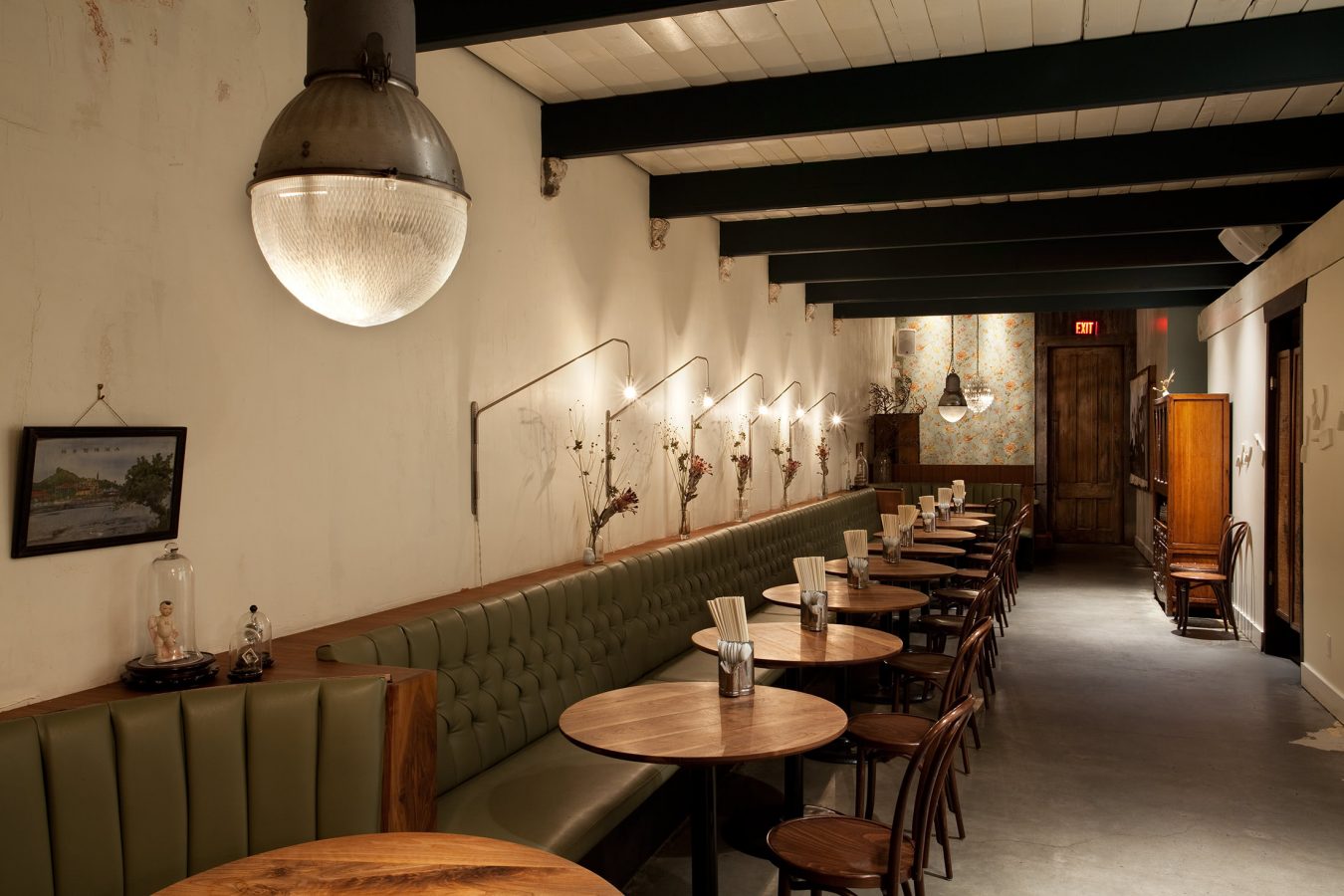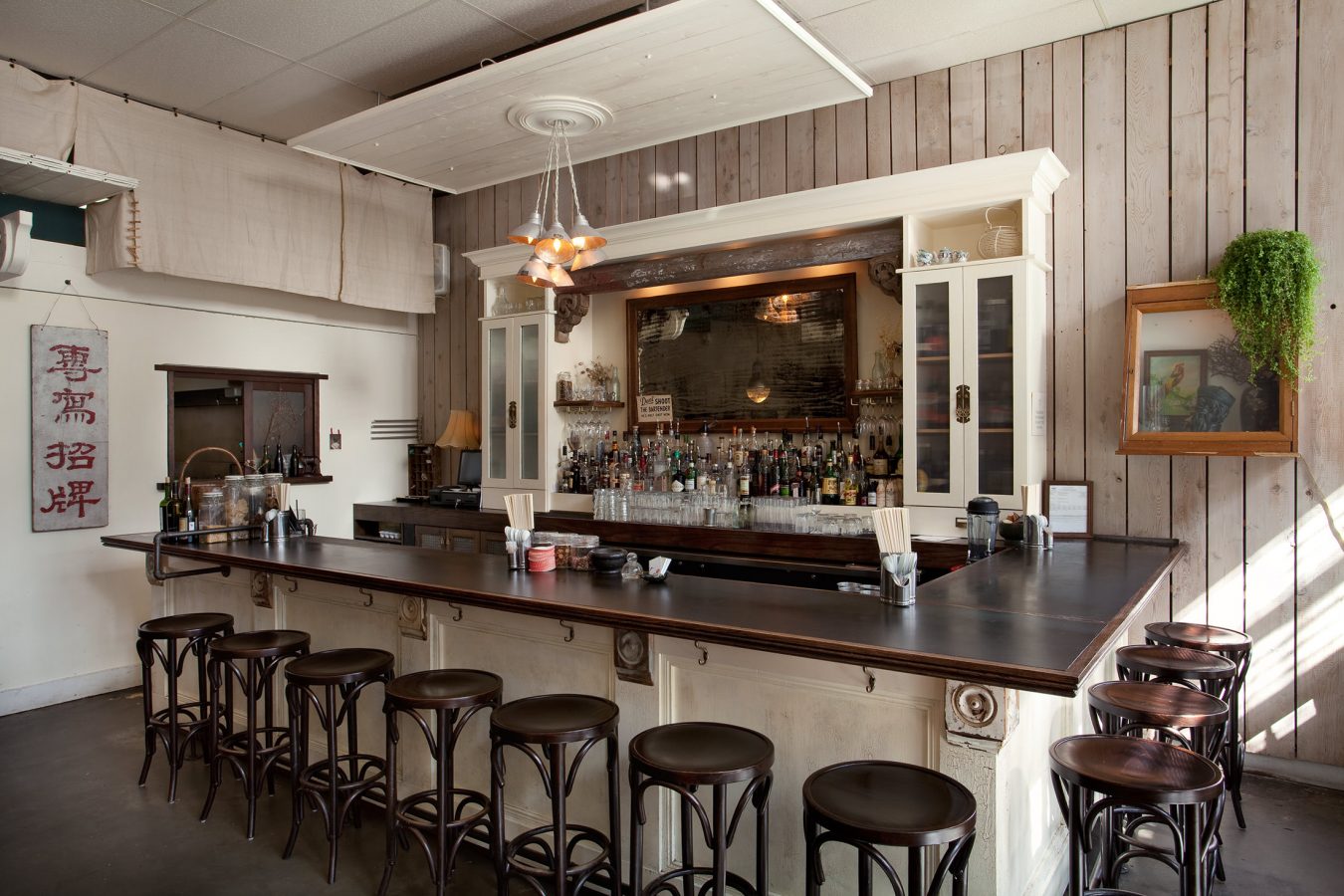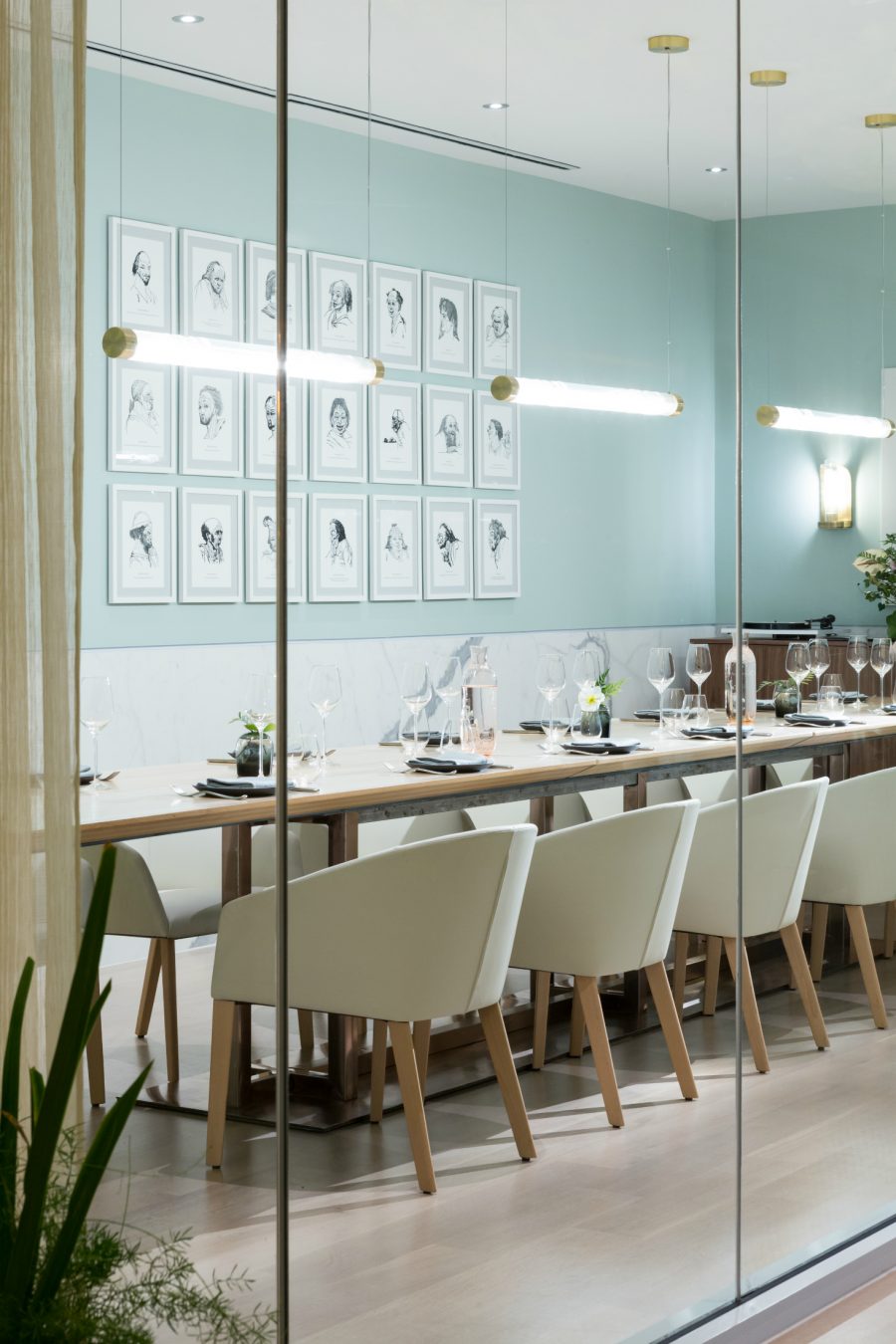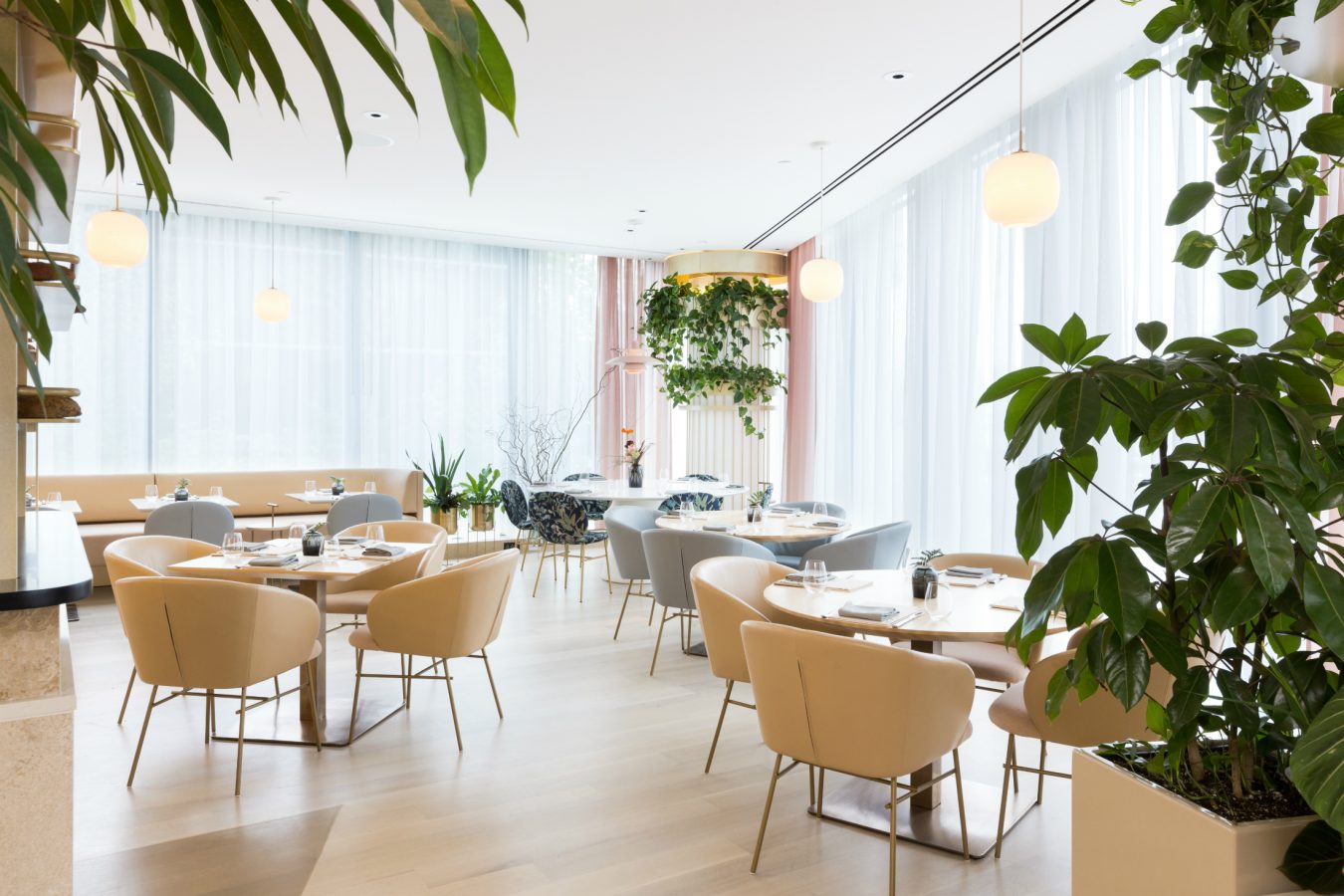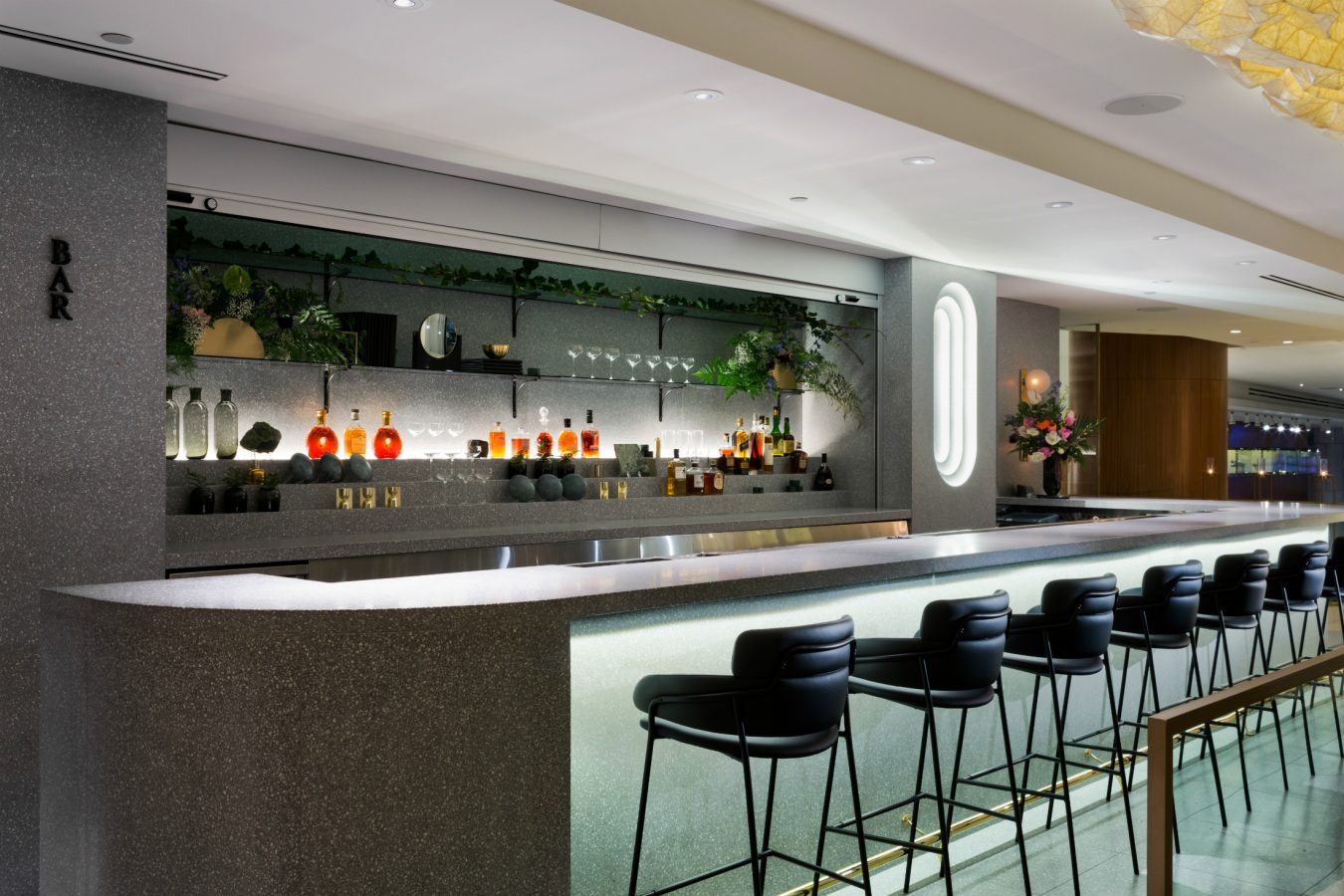When Botanist restaurant launched at the Fairmont Pacific Rim in April 2017, no one was talking about the food. It’s not that executive chef Hector Laguna’s menu is lacking—order the charred octopus with chorizo and kohlrabi, or a plate of pasta—but when the anticipated space opened its doors, Vancouver was abuzz with chatter about Botanist’s look. Because while Laguna’s food is what will keep people in their seats, it is undeniably the interior design—the plush pink Champagne Lounge; the lush and leafy Garden; the pale rose and beige-hued Dining Room—that brings people in. And for that, the man to thank is Craig Stanghetta.
Stanghetta founded his design firm, Ste. Marie, in 2011, and since then has been responsible for some of the city’s best-looking restaurants. The rustic shabby-chic interiors of Bao Bei? The sultry speakeasy vibe of Kissa Tanto? The humbly cozy digs of Ask for Luigi? All Ste. Marie, all Stanghetta. His projects turn to Instagram gold, creating much-deserved hype for restaurants in what is often considered an apathetic town.
“It’s been nice that there’s been a shift,” Stanghetta says, seated inside the meeting room of his East Hastings studio. “There was nothing holding me back from going in and changing the status quo, because nobody knew who I was.” Born in Northern Ontario, Stanghetta moved to Vancouver a decade ago to pursue an acting career. He had always been passionate about interior decoration and design, and after working on some television shows, realized maybe the Hollywood North angle wasn’t for him. Raised in a hospitality family, he knew a thing or two about how good restaurants tick, and had made connections in the industry while waiting tables.
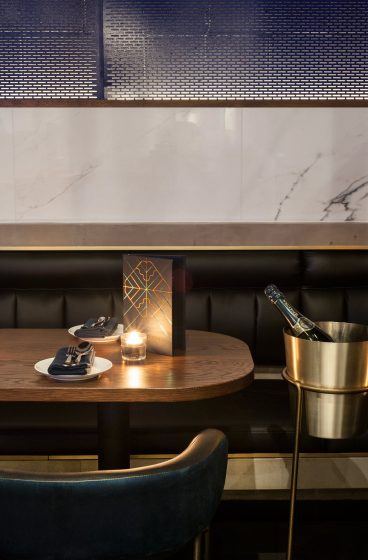
“That whole discourse about restaurants and food and what kind of food people are eating, and the prominence of ingredients—all that was really just starting to click into place,” he says. “And it coincided with people who were ready—at the right age and had enough experience and were able to secure financing—and I knew a lot of those people. So I just convinced them that I was going to design their restaurants.” He lets out a short laugh before adding, “And it worked out.”
Certainly that proved true: Stanghetta was able to gain some recognition in the industry (his first project was the still-beloved Bao Bei), and the restaurants had interiors unlike anywhere else in the city. “We want to look in unconventional places for things,” he says. “We don’t want people to feel like they’ve seen it everywhere.” Sourcing locally and abroad, the Ste. Marie team is “dialled in” with the best product, and if they can’t find it they make it themselves, often using the firm’s in-house industrial designers. “These chairs were a prototype and are literally the most uncomfortable things in the world,” Stanghetta says, laughing, in reference to the angular white chair on which he sits. Indeed, the skinny metal armrests and spinning powder-blue back cushion are not the most practical, but there is something charming about it all (if you don’t have to sit for too long).
Admirably, Stanghetta never lets his “design agenda” overshadow the victory of the project he is working on. “I’m always happier if the business is there in five years or 10 years and it’s busy, rather than it’s in cool design publications,” he admits. A restaurant needs to look nice on Instagram, but its food still has to taste good.
Read more in Design.

